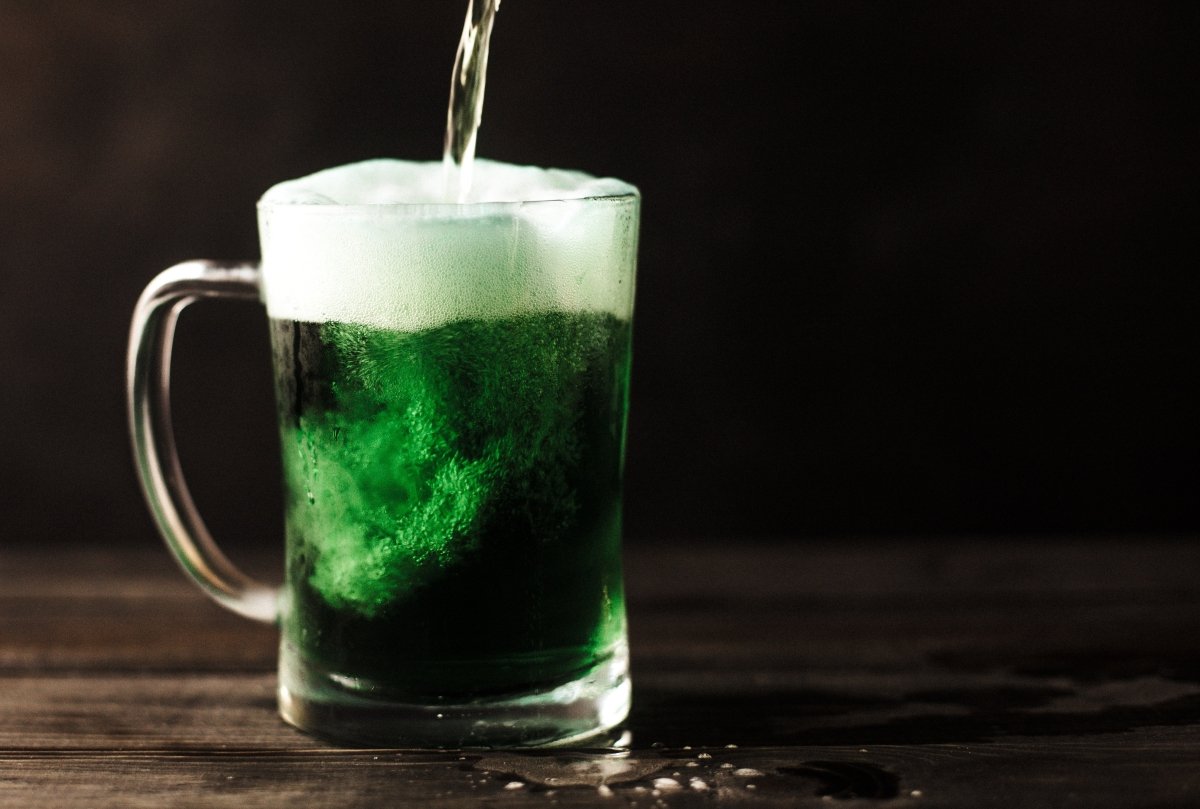-
Shop Beer
-
Shop Merchandise
-
Blog
-
Find Us
-
About
Your cart is empty
Looks like you haven't added anything to your cart yet

The Evolution of Table Beer
Imagine this, you’re a child in the middle ages. Your mum calls you to dinner. You sit down and dive straight into… a mug of liquid bread, table beer! That’s right. Medieval table beer was part of daily nourishment for every child.
While the summer hangs on by a thread, you are probably looking for something light and refreshing that isn’t a challenge. Is table beer what you’ve been looking for?
Table Beer in the Middle Ages
Like many things in beer history, table beer doesn’t have an exact moment when it popped into existence. There was no big bang.
As mentioned, table beers were a child-friendly bit of nosh. Perhaps even more so for those needing to put on a bit of weight. An 18th-century reference book for female boarding schools stated, “For the drink of the more robust children water is preferable, and for the weaker ones, small beer.”
However, medieval table beer wasn’t just for children. Table beer was democracy before there was democracy. It was served at the dinner table for one and all. Also known as small beer, it was very much the drink of the working classes. Rustic table beers were sustenance for a life of toil, sweat, and tears. All were to partake, including servants when the upper classes later embraced table beer.
Bill Shakespeare famously slated small beers in his works. For example in Henry IV, Falstaff is ridiculed for quaffing pints of small beer and never getting drunk. It’s no wonder that workers were known to drink up to ten pints a day on average!
Don’t worry, kids of the middle ages weren’t pissed on the regular (mostly). Historians believe that table beers and small beers were typically less than 1% ABV during this time. Over the centuries, table beers were mostly produced in the home.
Until the 18th century, table beer was drunk at work, school, and just about anywhere. By this timetable, beers ranged from 0.5% to 3% in ABV and ranged in colour from light to dark.

Image courtesy of Kendon Carrera
Low ABV Beer can still be a mainstay on the table
Beer Tax
Unless you’re an accountant or an expat trying to hide your money from HMRC, taxes aren’t usually interesting. However, the story of table beers is tied to taxes.
The first beer tax in the UK was the Saladin tithe, levied in England and France in 1188. This law was introduced by Henry II to raise money for the crusade against the capture of Jerusalem.
In the late 17th century, the concept of excise taxes was introduced to beer. By this time, brewing in England had gone commercial, leaving the monasteries and home brewsters behind. Beer tax would be determined by wholesale price.
By the 18th century, beer prices were centred around excise tax based on three categories:
- Small beer- less than 6 shillings per barrel
- Table beer- between 6 and 11 shillings per barrel
- Strong beer above 11 shillings per barrel
These prices were based on cost and not ABV. One could infer that beers cost more because they used more malt, and therefore were higher in alcohol. For the most part, table beer had evolved to around 2.5-4.0% during this period with small beer being less than 2% ABV.
In 1830, “Table Beer” disappeared as a tax category as the tax was shifted to malt and hops and not the final product. Over the next several decades weaker London porters, dinner ales, and light bitters supplanted table beer as the national favourite.
However, some breweries kept producing small beers and table beers heading into the 20th century. This was especially true in Scotland where brewers continued to export lower ABV beers to England.
A combination of factors including World War I led to an overall decrease in British beer alcohol content. At this point, many bitters, stouts, and porters were 3% or lower. Essentially, British table beer was no more.
Belgium
In Belgium, bière de Table, or Tafelbier persisted long after British table beer waned. You’ve likely had a few Belgian table beers yourself if you’ve ever spent time on the continent. These beers are much lower in alcohol than volatilizing dubbels, tripels, and quads.

A 1946 label of a Blong Tafelbier from defunct brewery in Humbeek, Belgium
Tafelbier is lower in malt and hops and driven by a fruity, earthy Belgian yeast character. According to The Oxford Companion to Beer, tafelbier is typically between 1 and 2.5% (but cheekily, also up to 3.5%) alcohol by volume. The colour “ranges from light blonde to jet black and all shades of amber and brown in between.
Belgian brewers De Es of Schalkhoven and Gig of Gérouville were exclusively brewing tafelbier until 1992 and 2007 respectively. In general, bière de table is still relatively popular in the Netherlands and Denmark while experiencing a sharp decline in Belgium over the past two decades.
The Belgian craft brewers of today gather inspiration from Trappist singles and Wallonian farmhouse ales such as grisette. Despite the similarities, the traditional brewers of said styles would never label their product as tafelbier or biere de table.
So is it merely semantics or is there more to it?
Modern Table Beer
In the past decade or so, table beer has become defined by the eye of the beholder. Craft Brewers in the US, UK, and continental Europe have all drawn on local and international table styles for inspiration.
The definition of table beer today is not black and white. You’d likely get a different answer from a brewery in San Diego than a brewery in East Sussex. Defining any historical beer term can become a slippery slope indeed!
When it comes to modern table beer, we couldn’t have a discussion without mentioning The Kernel Brewery based in Bermondsey. According to founder Evan O’Riordain, The Kernel Table Beer was the result of “a series of accidents.” Lightning in a bottle perhaps?
Whatever happened, The Kernel Table Beer continues to inspire British brewers to make sub-three per cent hoppy pale ales such as Siren’s, Half-Mast (2.8% ABV). Craft brewers could argue that sessionable low-ABV pales are the modern table beer.
On the other hand, CAMRA members would bring up that pale hoppy beers like Darkstar Hophead have been around for two decades. At 3.8% ABV, why is that not a table beer?
The government's new Alcohol Duty rates kicked in this month. As such, brewers are monetarily incentivized (or penalised for standing pat) to shrink their beers down to 3.4% ABV and lower. Breweries like Moor Beer Company announced they are down-sizing old stalwart Revival from 3.8% to 3.4%. Many other local brewers will likely follow suit.
With a future influx of beers below 3.5% ABV, does this mean we have a growing universe of table beers?
Well yes and no. If one chooses to focus solely on ABV, then you can draw an arbitrary line in the sand. Whether under modern or historical context, safe to say that the term “table beer” is confusing for the average drinker.
Sheep in Wolf’s Clothing, Beyond the Table
Whether it’s history, lower alcohol content, or quaffability, we love that the spirit of table beer lives on. Thankfully, plenty of great breweries in the UK and abroad our keeping the table beer-torch lit. As for us, our attention is focused on making proper big beers with less alcohol.
Beers like Lager Day Saints and Shetland Pony Ale aren’t table beers or small beers. You may disagree because of their 0.5% and 2.8% ABV strength respectively. We think we can change your opinion. Just hear us out.
Someone once said, “It’s not the size that counts but how you use it.”

Image source: Unsplash
For starters, there is nothing small about SiWC beer. We pack as much flavour as possible into every batch. We aren’t restrained by historical context or recent trends. We’re not trying to dodge excise tax or mimic a style from a time and place.
Sheep in Wolf’s Clothing beers like Seasonal Stout may be slight in alcohol. However, they come up massive where it matters most: experience.
Our low-ABV beers are made to be drunk in any situation. You can’t confuse our beers with table beers because they don’t taste like table beers.
Sheep in Wolf’s Clothing beers taste like beer.
Here’s a final thought. Did you find this blog because you drink beer or table beer? (We know which one we’d prefer).
We are crushing the misconception that lower alcohol means less flavour. By leading the way in low-ABV big beers, we are promoting a more inclusive and healthier beer community. Besides, drinking lower-alcohol and non-alcoholic beer has plenty of benefits.
Sheep in Wolf’s Clothing beers are for everyone, even those who prefer to drink little to no alcohol. You can drink our beers in the pub, camping, in the park, at home, and yes, even at the table
Don’t take our word for it. Find out for yourself that ABV is just a number. Head to our online store to pick yourself up a case of refreshment. Your taste buds will thank you later—table not included nor required!
- Choosing a selection results in a full page refresh.


